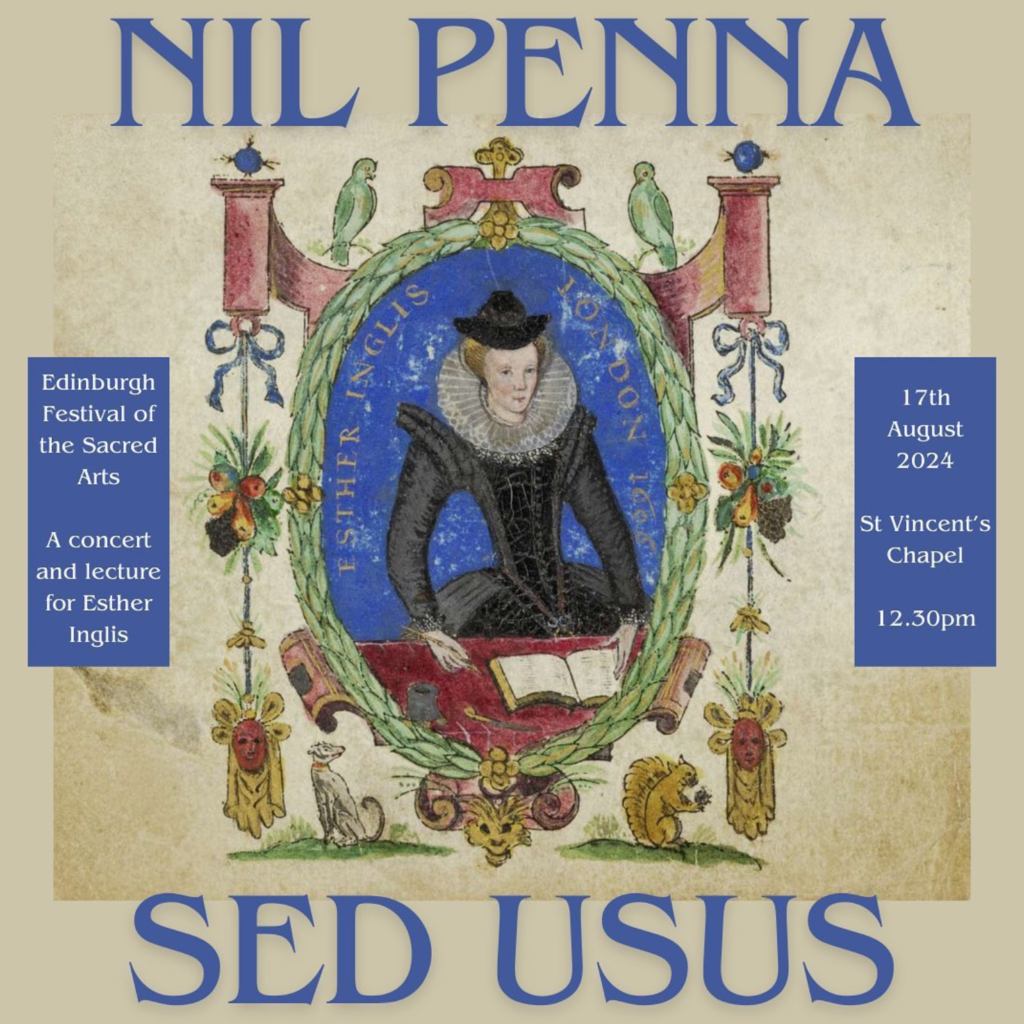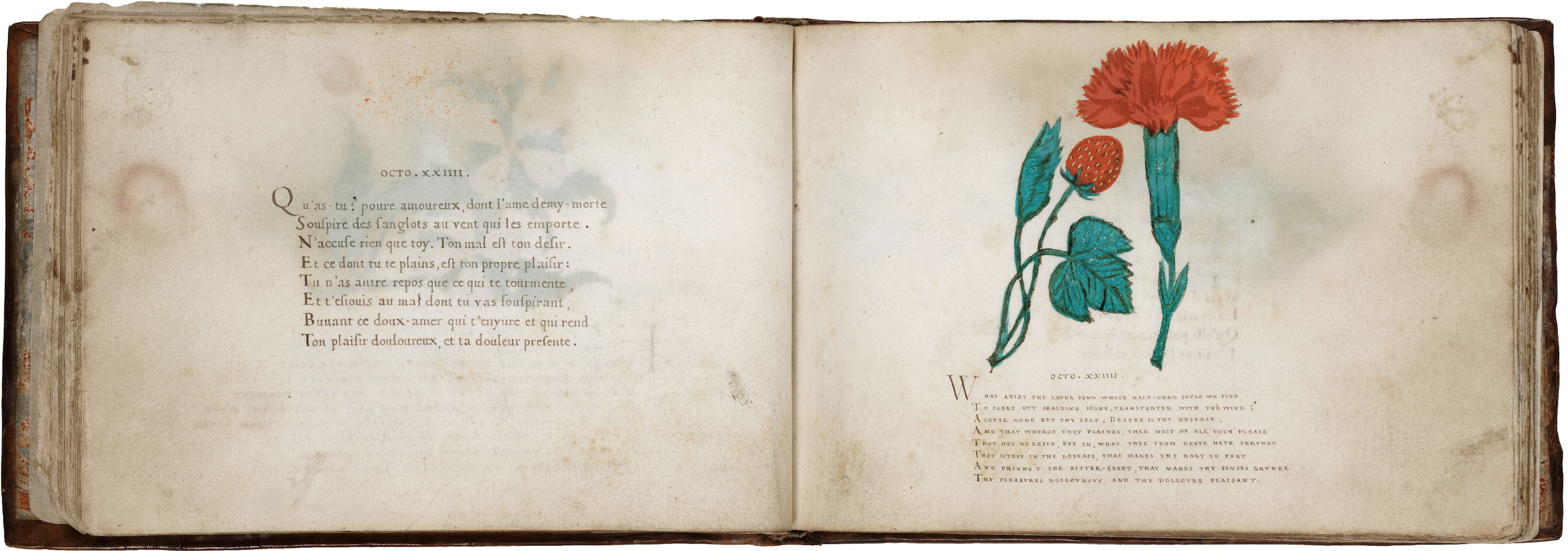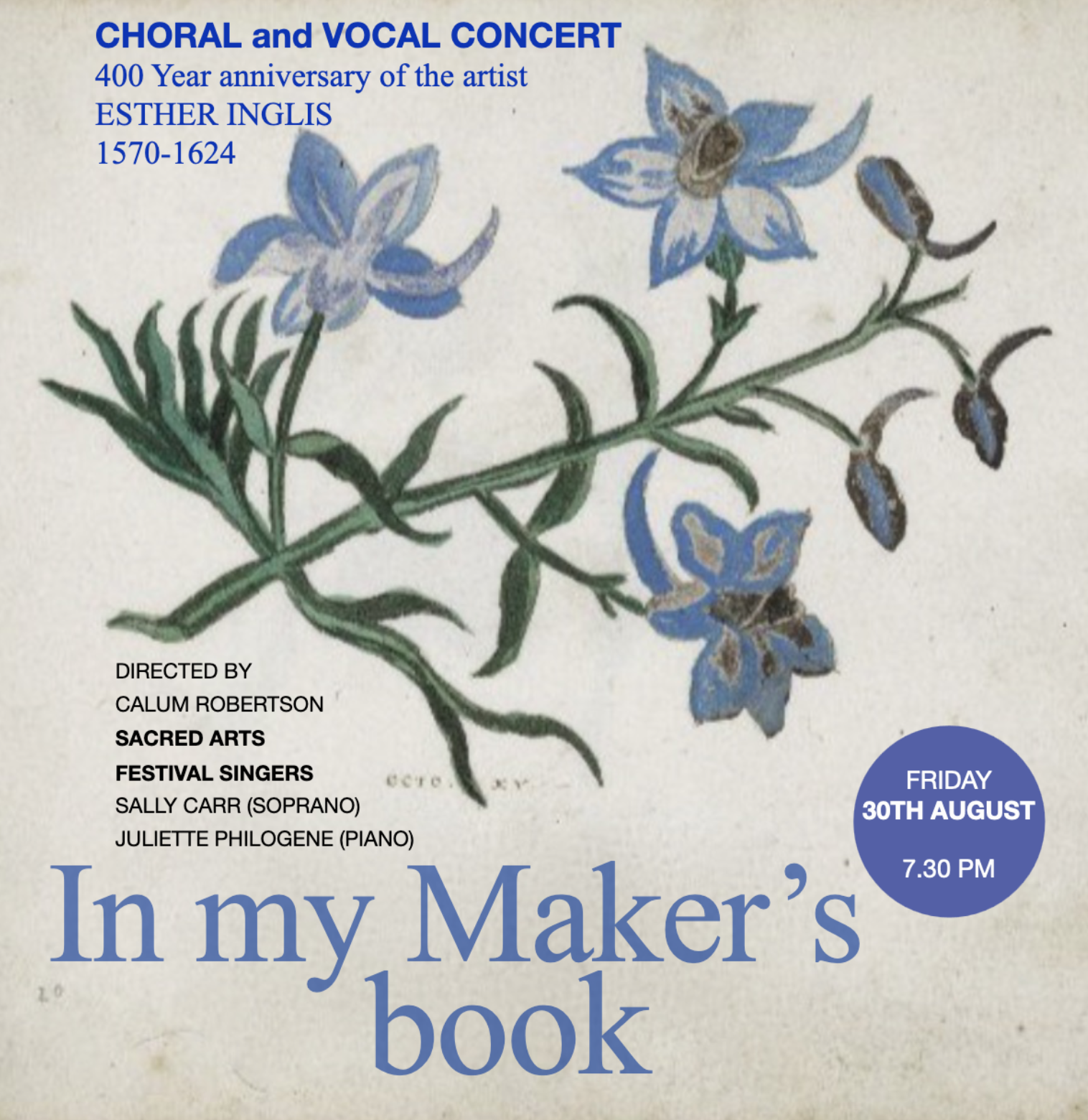
The Esther Inglis project has been gathering momentum behind the scenes, with plans now in place for an international colloquium, an online exhibition taking shape, many new digitisations of Esther Inglis’ manuscripts which can soon be shared, and several academic conference papers having brought Esther Inglis’ work to new networks and scholarly audiences.

For those who are already in Edinburgh, there are two events relating to Esther Inglis and her manuscripts taking place in August, both with a focus on the music which surrounded Inglis in Jacobean Scotland, and the songs which shaped her calligraphic and artistic practices. Music was an important influence on Esther Inglis’ early construction of herself as a woman artist and writer; in her earliest self-portraits she depicts herself at her writing-desk together with a lute and an open book of music, following the 1567 portrait of the French Huguenot poet, Georgette de Montenay (1540-1581), from which Inglis works.

Bodleian Library, MS 990
On the 17th August, the beautiful Gothic space of St Vincent’s Chapel will host “Nil Penna Sed Usus: A Quartercentenary Event for Esther Inglis”. This immersive event will have two parts; the first will be a recital by the Sacred Arts Festival Singers, directed by Calum Robertson. The Festival Singers will perform selections from the works of Antoine de Chandieu and Guy du Faur. Chandieu’s Octonaires sur la vanité et inconstance du monde, and du Faur’s Quatrains are works of devotional poetry which Esther Inglis copied frequently into her own calligraphic manuscripts.

Folger Shakespeare Library, V.a.91 (1600)
Of her 63 known books, 26 contain copies of these religious verses; either their French originals, or (in three cases) English translations of Chandieu’s Octonaires which Esther Inglis composed herself. Of these 26 mansucripts, 9 are made in Esther Inglis’ floral, illuminated style, embellished with painted botanical imagery and the verses copied in her characteristically wide range of calligraphic scripts. These devotional verses were set to music within Esther Inglis’ lifetime; settings of the Quatrains de Guy du Faur by Paschal de l’Estocart were published in 1582, for example, while Claude le Jeune (1530-1600) composed settings for Chandieu’s Octonaires.

Selections of these settings will be performed in St Vincent’s chapel, together with a series of metrical psalms and canticles which would have been sung in the services attended by Esther Inglis and her Scottish and French contemporaries. The second part of this event, taking place in the undercroft of the chapel, will be an introduction to the manuscripts of Esther Inglis, with particular focus on her copies of the verses which have been set to music. The result will be an immersive, multimedia event in which to understand the aural world which surrounds Esther Inglis’ work.

The second musical event, on the 30th August, will take place at South Leith Parish Church, a medieval church now 533 years old. This location must be close to where Esther Inglis herself lived; she died at Leith on the 30th August 2024. The event is entitled “In My Maker’s Book”, a line from the Nine Haiku for Esther Inglis written by Gerda Stevenson. These Nine Haiku have now been set to music by Sheena Phillips, and this event will offer the world-premiere performance of this newly-commissioned work, performed by Sally Carr (soprano), Juliette Philogene (piano) and Calum Robertson (clarinet and bass clarinet). Again directed by Calum Robertson, the Sacred Arts Festival Chorus will also perform musical pieces from Esther Inglis’ lifetime, including selections of the metrical Psalms, and further settings of the Octonaires sur la vanitie et inconstance du monde and the Quatrains de Guy du Faur.
For further details of this unique concert, please see the Eventbrite page.
